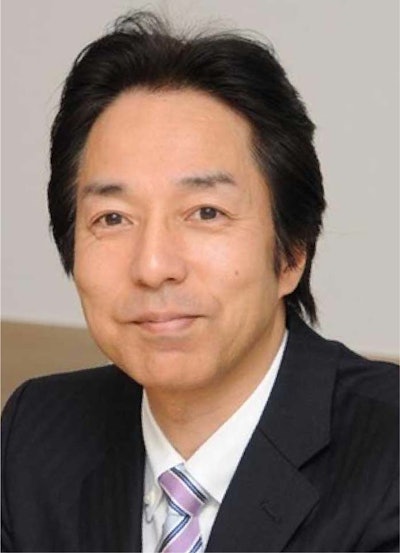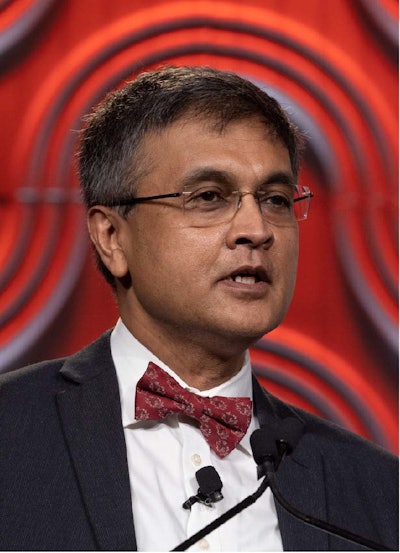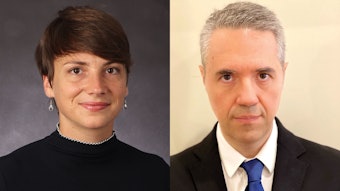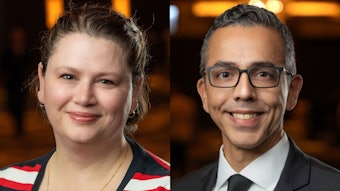Endovascular therapy, tirofiban for LVO and periodontal care highlight late-breaking science
Investigators share their late-breaking science findings during the ISC 2022 Opening Session.

Late-Breaking Science presented during Wednesday’s #ISC22 Main Event Opening Session revealed:
- Endovascular therapy plus medical therapy may give improved outcomes versus medical therapy alone for large mild-moderate ischemic strokes.
- Tirofiban may improve outcomes for patients with intracranial large vessel occlusion in conjunction with large artery atherosclerosis.
- Intensive periodontal care may reduce stroke risk factors.
Patients who suffer a large vessel ischemic stroke will likely have a better recovery on combination endovascular plus medical therapy versus medical therapy alone. The Recovery by Endovascular Salvage for Cerebral Ultra-Acute Embolism Japan — Large IscheMIc core Trial (RESCUE-Japan LIMIT) found that patients with Alberta Stroke Program Early Computerized Tomography (CT) Score (ASPECTS) of 3-5 treated with endovascular plus medical therapy were 2.43 (p=0.002) times more likely to have a modified Rankin Score (mRS) 0 to 3 versus medical therapy alone 90 days post-stroke.
RESCUE-Japan LIMIT randomized 202 patients who had suffered a large vessel occlusion within 24 hours or less of onset to either best medical therapy (102 patients) or best medical therapy plus endovascular therapy (100 patients) at 45 hospitals across Japan. Treatment was open label and assigned by randomization.
The mean age of patients was 76, and 44% were female. Nearly half (49%) of patients had an occlusion of the middle cerebral artery M1 segment, 31% the internal carotid artery. The median National Institutes of Health Stroke Score (NIHSS) on admission was 22, and the median ASPECTS was 3. The primary outcome was mRS 0 to 3 at 90 days. Secondary outcomes at 90 days included mRS ordinal shift, mRS 0 to 2, mRS 0 to 1, and mortality at 90 days, plus early improvement of NIHSS greater than or equal to 8 at 48 hours.
The percentage of patients with a mRS score of 0 to 3 at 90 days was 31.0% in the endovascular plus medical therapy group and 12.7% in the medical therapy only group (relative risk, 2.43; 95% confidence interval (CI), 1.35 to 4.37; P=0.002).
 Shinichi Yoshimura, MD, PhD
Shinichi Yoshimura, MD, PhD
“This study provides important evidence that endovascular therapy plus medical therapy for patients with larger infarct regions and ASPECT of 3 to 5, have a higher likelihood of returning to independent walking than medical therapy alone,” Dr. Yoshimura said.
The study was published simultaneously in the New England Journal of Medicine.
Tirofiban may improve outcomes in large artery atherosclerosis strokes
Tirofiban, a nonpeptide platelet glycoprotein IIb/IIIa inhibitor is used to help decrease the risk of thrombotic complications during percutaneous coronary intervention (PCI) and may improve functional outcomes in stroke patients with intracranial large vessel occlusion (LVO). The first multicenter, randomized, double-blinded, placebo-controlled trial of Endovascular Treatment With versus Without Tirofiban for Stroke Patients With Large Vessel Occlusion (RESCUE BT) of tirofiban in LVO suggests the agent may improve outcomes in patients with LVO strokes characterized by large artery atherosclerosis (LAA) but not in non-LAA strokes.
 Raul G. Nogueira, MD, FSVIN, FAHA
Raul G. Nogueira, MD, FSVIN, FAHA
RESCUE BT randomized 948 patients to either tirofiban (463) or placebo (485) before endovascular treatment. Patients in the two groups were similar, 67 years old, about 59% male, with a median NIHSS score of 16 at admission. Stroke etiology included cardioembolism (42.8%), LAA (45.8%), other (3.2%), and unknown (8.1%).
The primary outcome was mRS at 90 days and the key secondary outcome was the proportion of 90-day mRS 0 to 1 or return to pre-morbid mRS. Safety outcomes included the frequency of symptomatic intracerebral hemorrhage (ICH) and 90-day mortality.
The 90-day mRS for the overall trial was 3 in both the tirofiban and placebo arms (adjusted common odds ratio 1.09, p=0.46). Secondary outcomes were also similar between the two groups. But the adjusted common odds ratio for improved mRS in the LAA subgroup was 1.43 (95% CI 1.02-2.00) favoring tirofiban. There was no evidence of treatment effect in other prespecified subgroups.
Tirofiban was associated with excess bleeding versus placebo 9.7% versus 6.4% for symptomatic ICH (p=0.06) and 34.9% versus 28.0% for any ICH (p=0.02). There was no difference between the two groups in 90-day mortality or other safety outcomes.
“The trial results indicate that not all patients with large vessel occlusion stroke should be treated with tirofiban,” Dr. Nogueira said. “But in patients with large arterial atherosclerosis, tirofiban in combination with endovascular treatment may help further reduce the severity of disability. Clinicians who encounter large arterial atherosclerosis patients with large vessel occlusion may consider treatment with tirofiban.”
 Souvik Sen, MD, MPH, FAHA
Souvik Sen, MD, MPH, FAHA
Better care of dental disease may reduce blood pressure and other risk factors associated with stroke. In what appears to be the first randomized controlled trial of periodontal treatment in secondary stroke prevention, intensive periodontal care reduced blood pressure and HDL cholesterol compared to usual dental care.
The intensive care group also showed numerical reductions in a composite of stroke, myocardial infarction (MI) or death, but the reduction was not statistically significant.
The Periodontal Treatment to Eliminate Minority Inequality and Rural Disparities in Stroke (PREMIERS) study compared standard and intensive care for patients with a prior stroke or a transient ischemic attack (TIA).
Standard dental treatment in PREMIERS included supragingival removal of plaque and calculus, regular toothbrushing and advice for dental care.
Intensive treatment included supragingival and subgingival removal of plaque and calculus, extraction of hopeless teeth, locally antibiotic treatment, electric toothbrushing mouth wash and air flossing.
Periodontal disease (PD) has long been recognized as a risk factor for stroke and myocardial infarction, said Souvik Sen, MD, MPH, FAHA, professor and chair of neurology at the South Carolina School of Medicine Columbia. PD is initiated by oral bacteria, periodontal disease and results in inflammation in oral tissues that can allow cytokines, bacteria and bacterial products into systemic circulation, increasing the risk for cardiovascular disease. PD is present in about half of the U.S. population and is prevalent in the U.S. stroke belt, he added.
A total of 280 patients were randomized, 138 to intensive care and 142 to standard care. The mean age was 59, 90% were male, 73% were Black, 89% had hypertension, 51% had diabetes and about 95% had a prior stroke.
The primary outcome was a composite of stroke, MI and death over 12 months. Secondary outcomes included blood pressure, glycemic control, dyslipidemia, inflammation and carotid intima-media thickness (IMT).
Just 11 (8%) of the intensive care group met the primary outcome compared to 17 (12%) of the standard care group, hazard ratio 0.65, but the difference was not statistically significant (p=0.26).
While there was no placebo arm due to ethical concerns of withholding dental treatment, comparison of the intensive care group versus a historical control based on a cohort study at the University of North Carolina showed a statistically significant improvement in the primary outcome for both intensive and standard dental care.
Patients with four or more dental visits over the one-year study also were significantly more likely to have fewer composite events than patients with a single baseline dental visit (p=0.0017).
“I would say that yes, oral hygiene is important to cerebrovascular and cardiovascular health,” Dr. Sen said. “And that we need more studies in this area.”











